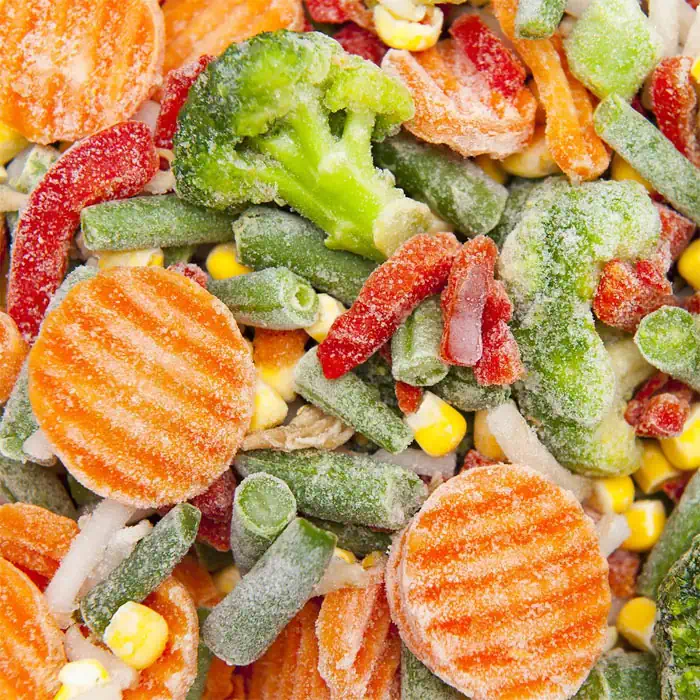How to Prevent Freezer Burn in Vegetables
A great way to store vegetables so that you can enjoy them for as long as possible is to freeze them. But vegetables can get freezer burn, which can ruin the taste and texture of the vegetables and make them inedible.
If you've purchased a freezer-full of Jersey Fresh produce from Muzzarelli Farms just waiting to be cooked, should you be worried about freezer burn?
What is Freezer Burn?
Freezer burn is the name given to the process of dehydration that is caused when the moisture within food is lost due to incorrect storage. It is most often seen in foods that are kept in the freezer for long periods of time without being protected properly. Freezer burn occurs when the outer layer of a food item becomes exposed to the cold air inside the freezer, causing the outside layer to dry out, creating a tough and leathery texture.
What Causes Freezer Burn in Vegetables?
From fresh cuts of beef and store-bought veggies to half-eaten pints of ice cream, freezer burn doesn't discriminate. Freezer burn in vegetables and other foods is usually caused by incorrect storage, such as improper wrapping or packaging. When vegetables are not packaged properly, the moisture from the vegetables will escape, leading to moisture loss and dehydration, resulting in freezer burn. Holes in bags or cellophane will expedite the burn effect, so it's important to inspect what goes into the freezer so you won't waste perfectly good veggies.
Other factors that can contribute to freezer burn in vegetables include exposure to air, over-filling the freezer, and incorrect temperature settings. Freezer burn doesn't appear overnight, but often takes around three months to start appearing, so you may still have time to prevent freezer burn if it hasn't yet set in.
How to Prevent Freezer Burn in Vegetables
- Ensure proper freezer capacity – Filling your freezer by at least 75% can help regulate the temperature and keep it from working harder. A steady temperature will cut down on the frequency of freezer burn. On the other hand, overfilling the freezer can also block air vents, restricting the flow of cold air and overtaxing your refrigerator's condenser, which could lead to a burn out. So pack it in, but don't block any vents!
- Prepare vegetables correctly – Except for onions and peppers (both of which can be frozen raw), it's best to blanch and/or cook vegetables before freezing. This stops or slows down the enzyme action that causes loss of color, flavor and texture. If you try to freeze raw vegetables, such as attempting to freeze raw sweet potatoes, they'll turn mushy or grainy when thawed and won't taste as good.
- Place only cool foods in the freezer – Packaging and placing hot food directly into the freezer makes it more susceptible to freezer burn before the typical three-month timeframe. Allow hot foods to cool in the fridge before storing in the freezer.
- Package foods property – Use appropriate storage containers, such as airtight freezer bags or plastic containers with a tight lid. The goal is to remove as much air as possible, and this can be done by either vacuum-sealing or using freezer bags and pressing out the air before sealing. It is also important to make sure that any containers are sealed properly, with no gaps or openings where air can get into the container.
- Correct freezer temperature – Adjust the temperature settings of your freezer to the proper temperature. The ideal temperature for a freezer is 0°F (-18°C), so don't allow your freezer to go over that temperature. This will ensure that the moisture from the vegetables does not escape, helping to keep them fresher for longer. Also make sure that your freezer door's seal is tight and has no gaps in it.
- Label Packages – It's important to label and date vegetables and other foods you put in the freezer. That way, you can prepare the older food first. You can make it easier to select the right packages by putting newer items at the back of the freezer and older items to the front.
 856-691-2497
| Fax 856-692-9007
856-691-2497
| Fax 856-692-9007
 856-691-2497
| Fax 856-692-9007
856-691-2497
| Fax 856-692-9007
